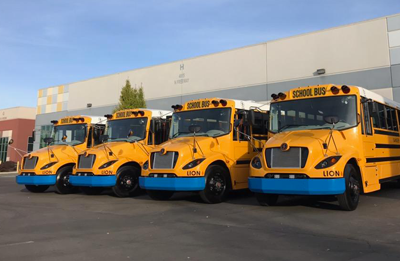How are efforts to impress college buses coming alongside in order that our younger individuals aren’t uncovered to noxious exhaust fumes? — Will Durk, Waterbury, CT‘
Over 21 million youngsters experience the varsity bus every day, making scholar transportation the biggest U.S. mass transit system. Some 90 p.c of those buses run on diesel, a recognized carcinogen with critical public well being and ecological impacts. Air pollution from diesel fumes has been instantly linked to elevated bronchial asthma and diminished cognitive improvement in youngsters, excessively affecting low-income communities. Says Jessica Keithan, co-founder and director of the Texas Electrical Faculty Bus Mission, “We’re poisoning our youngsters on the best way to high school.”

Fortunately, advocacy teams throughout the U.S. have been making nice strides in addressing electrification of college buses, from involving underserved communities and educating policymakers to working with college districts on this challenge–and prompting motion.
The U.S. authorities has made vital investments to assist college districts transition to electrical. By way of its Infrastructure Funding and Jobs Act signed into regulation in 2021, the Biden-Harris administration created the Clear Faculty Bus Program, a $5 billion Environmental Safety Company- (EPA) funded grant program to switch diesel-run buses with zero-tailpipe-emission, electrical automobiles. Thus far, this program has efficiently built-in greater than 12,000 electrical buses into college districts nationwide.
States Are Supporting Electrification, Too
Along with this noteworthy funding, states throughout the nation have adopted their very own legal guidelines to switch diesel-fueled college bus fleets with electrical. California, New York and Illinois lead the “cost.”

There are inherent roadblocks in mass electrification of college buses. Greater than 800 college districts have at the very least one electrical college bus in service, however many merely don’t have the price range out there to decide to extra. In line with the U.S. Home of Representatives’ Majority Workers Report Analyzing the EPA’s Clear Faculty Bus Program, the long-term gas upkeep financial savings are barely well worth the up-front funding in electrical college buses, which price an estimated $350,000 per bus, on high funding wanted in a charging infrastructure. The EPA program tremendously assists districts, however it’s solely resulting from run via 2026 or as soon as the $5 billion is depleted. Additionally, the politics behind going electrical may cut back funding alternatives relying on who’s within the White Home subsequent 12 months. “If Trump is elected, the actual fact is that we might lose this funding,” says Leah Stokes, an affiliate professor on the College of California, Santa Barbara.”
With or with out funding, college bus electrification must be made extra inexpensive. Shifting from diesel to electrical will solely occur when leaders at each stage perceive and rally behind it.
[Ed. note: I’ll be honest, besides the positive news on the electrification front in this story, what convinced me to publish it was the photo. That’s WA Governor Inslee at my alma mater, Franklin Pierce High School! Go Cardinals.]
Contacts:
Electrical Faculty Bus Initiative
EarthTalk® is produced by Roddy Scheer & Doug Moss for the 501(c)3 nonprofit EarthTalk, which welcomes donations. See extra at E Journal. Ship inquiries to: [email protected].
The submit How A lot Progress Have We Made to Transition to Electrical Faculty Buses? first appeared on Clear Fleet Report.


